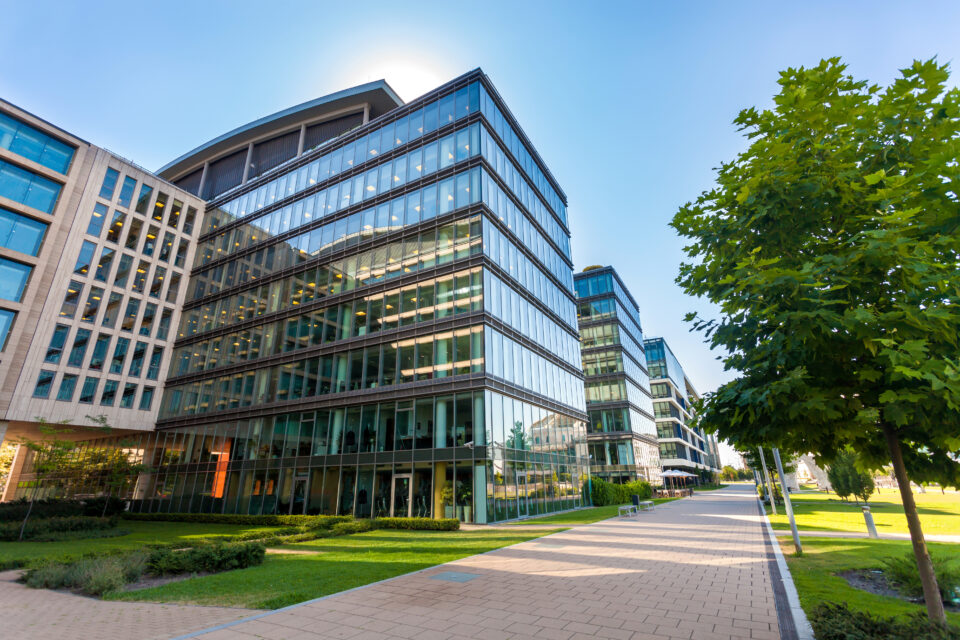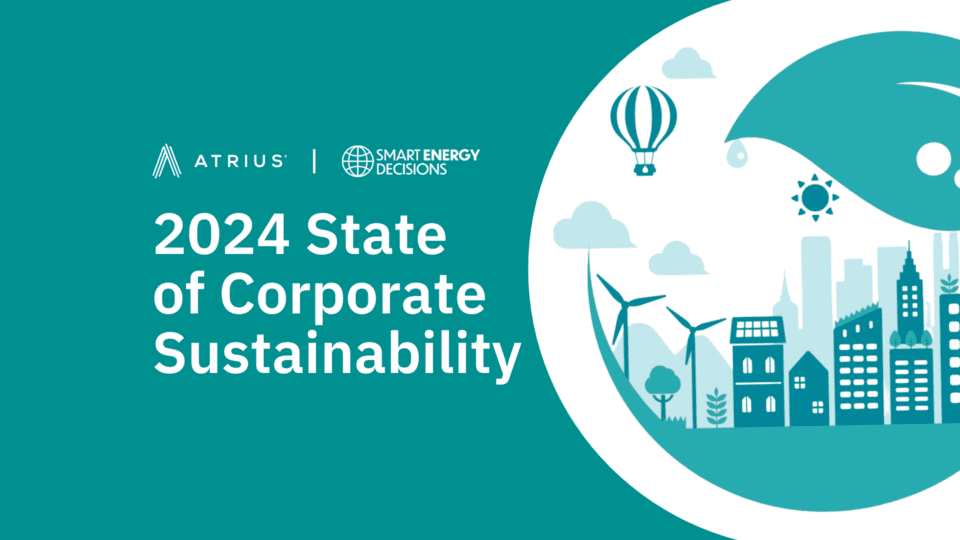
The New Decision Factor: Why Energy Efficiency Shapes Where We Learn, Work, and Buy
Learn more about how energy efficiency is a new deciding factor in how end-users are learning, working, and purchasing within intelligent spaces.

Learn more about how energy efficiency is a new deciding factor in how end-users are learning, working, and purchasing within intelligent spaces.

Discover how Acuity Brands’ Leadership Program empowers recent graduates with hands-on experience, real responsibilities, and mentorship—preparing them for long-term success in the Intelligent Spaces Group.

Dynamic pricing is a rapidly growing field across industries, thanks to advances in data analytics and AI. Research suggests ways it could be leveraged for simultaneous sustainability and revenue improvements.

Facilities management ensures the productivity, health and safety, energy efficiency and maintenance to serve the core functional purposes of a commercial space.

ESG data is most widely used for investing and corporate annual reporting purposes. It also has important operational purposes that help companies use it for use cases directly linked to business optimization.

Beyond supporting spatial navigation, wayfinding offers an important opportunity to catalyze sustainability. By utilizing a route optimization and cartographic tool in alignment with sustainability goals, companies can accelerate their improvements and encourage eco-friendly on-site behaviors.

Demand response programs reward flexible energy use in commercial buildings through financial incentives. Building owners using smart technologies are best positioned to access these opportunities.

Return to work orders could minimize the positive environmental impacts gained from remote work. Yet, business priorities extend beyond environmental targets, showing the need to manage multiple areas of business impact at once. Data remains key to solving increasingly complex management issues.

Sustainable lifestyle choices can help raise awareness about globally impacting challenges and influence others to follow. Here's an extensive list of ways to be more sustainable.

Building management systems help building owners and managers operate buildings as efficiently as possible. In addition, they collect data and insights useful for decision-making and reporting. Learn more about implementing these systems.

Sustainability is a trend that has been growing for several decades. Understanding how sustainability benefits cities, communities and businesses gives insight into how and why people choose to take sustainable actions.

Companies are not always sure whether or how sustainability issues and performance influence their long-term value.

The multifamily building industry faces sustainability regulations and interest in sustainability from tenants. Tracking sustainability metrics and moving towards more sustainable operations and building features is key for a long-term business strategy.

Decarbonization strategies for buildings tend to focus on making significant one-time upgrades to a heat pump or renewable energy installation. These strategies aren't always cost effective. We share alternative strategies to join the clean energy future without the upfront costs.

Originally published by Facility Executive. Choosing or updating a building management system (BMS) requires examining how these systems will communicate critical building information.

Seasonal temperature and weather shifts can affect 44-67% of electricity demand in buildings. Analyzing real-time data on seasonal shifts is a good way to enhance your energy management and sustainability strategy.

IT professionals are an overlooked resource for sustainability. Given the immense importance of data for sustainability impact tracking, monitoring and reporting, IT professionals can support processes like sustainability data collection, automation and analysis.

Design thinking is a problem-solving approach useful for sustainability in organizations. Learn ways to incorporate its iterative and human-centered concepts into your sustainability approach.

Warehouse energy consumption costs weigh heavily on operating budgets. Learn more about the energy efficiency strategies warehouses can take to lower these costs.

Six airports for sustainability are leading by example. Their inspiring actions demonstrate why it's important to share sustainability activities with travelers.

Restaurants have energy-intensive operations due to the energy demands of commercial kitchen equipment. Energy savings can lead to lower energy costs and important sustainability improvements.

Our VP of Marketing and Sustainability shares her perspective of the status of the U.S. SEC climate disclosure ruling.

Choosing ESG Software can be a big decision for a firm. Here's why finding the right software for managing ESG is important for businesses of all sizes.

Global water risks are mounting in ways that could unleash new challenges for businesses. Here is our primer to approaching water risks strategically.

The GHG Protocol is one of the most widely used standards for ESG reporting. Specifically designed for carbon accounting, this protocol will prepare your company to report your carbon emissions accurately and effectively.

Leaders are prioritizing sustainability more than ever. Here's how they can become the sustainability champions of their organization and motivate employees to join the call to action.

On March 6, 2024, the Securities and Exchange Commission (SEC) finalized its long-awaited guidance on their climate disclosure rule. Here are our key takeaways to help you navigate the disclosure requirements.

AASHE is a leading certification for sustainability in higher education. Learn why it matters for keeping up with today's sustainability trends.

The 2024 State of Corporate Sustainability report reflects the biggest trends, drivers, and challenges facing energy, facility, and sustainability teams.

California passed two climate disclosure laws for reporting Scope 1, 2, and 3 emissions and climate financial risk. Learn how they compare to other climate regulations.

This article was originally posted by Regional Gateway. The aviation industry is responsible for 12% of the world's CO2 emissions. To make a change, every airport must be on board.

Scope 1 and 2 emissions classify emissions by businesses' direct and indirect control. Learn how reporting them can bring a competitive advantage.

In 2023, as society continues to value hybrid work models, we ask, is working from home better for the environment than working in person?

This article was originally posted by Data Center POST. With data centers in high demand, their carbon footprint can be large. Read about data center sustainability from Atrius.

This article was originally posted by FacilityManagement.com. Alongside the celebrations of the Olympics are their environmental impact. Using smart technology, the Olympics can reduce its footprint.

This article was originally posted by Facilities Management Advisor. In the 4th Industrial Revolution, we can leverage built spaces to address climate goals. Explore more with Atrius.

Commercial Real Estate has unique challenges for carbon emissions reporting, especially for Scope 3 emissions. Find out ways to solve these challenges with technology.

Airport Carbon Accreditation gives airports a set of achievable certification levels to help improve their sustainability. Airports’ ambition is clear, now that they have adopted the aviation industry’s latest sustainability target.

The EU’s Corporate Sustainability Reporting Directive (CSRD) requirements are significantly increasing in 2024. A total of 49,000 businesses and subsidiaries based in Europe must adhere to Europe’s new set of environmental, social and governance reporting standards in 2024.

This article was originally posted by Facilities Management Advisor. Emerging technology can contribute towards reaching net-zero emissions and may also put more control back in facilities managers’ hands.

This article was originally posted by i-FM.com. Facilities managers can make PACES more efficient and influence how people engage with buildings by investing in climate tech.

This article was originally posted by BUILDINGS.com. What is the history of built-space innovation that led us to this new era of sustainability? Read more from Atrius.

This article was originally posted by Facilities Management. New technology has made buildings more efficient than ever before. Read about the advancements towards smarter, sustainable buildings here.

This article was originally posted on HIT Consultant. By investing in energy management, the healthcare industry can continue to improve the lives of its patients. Read more here.

This article was originally published on Patient Safety & Quality Healthcare (PSQH). The healthcare industry is setting sustainability goals to reduce their environmental impact.

This article was originally published on Mission Critical. Massive amounts of energy are needed to build, cool, and operate these facilities Remote work, virtual learning, and the increasing use of […]

This article was originally published on Aviation Pros. Together, technology companies, airports and airlines represent the three big pieces responsible for enhancing the passenger experience. Newly released data shows that air travel is experiencing […]

Originally published by Small Business Currents.

Originally published by Facility Management. Learn more about what it means to get ahead of sustainability reporting requirements with simple solutions.

Originally published by Hotel Management. Explore the next steps required to become more sustainable on the road to net-zero in the hotel industry.